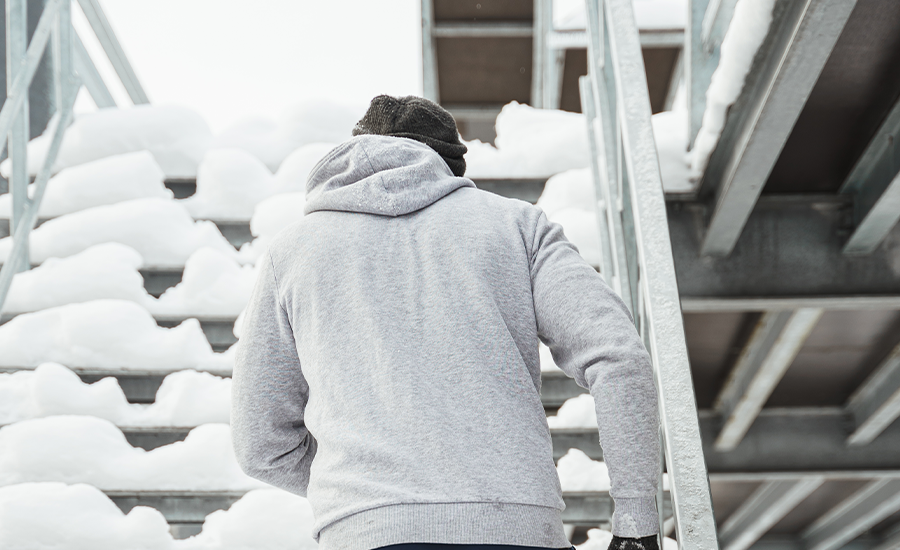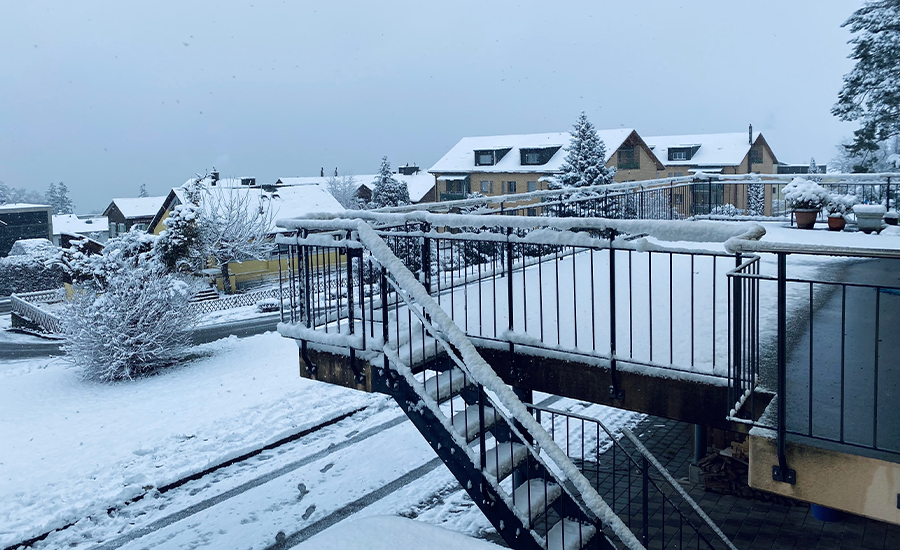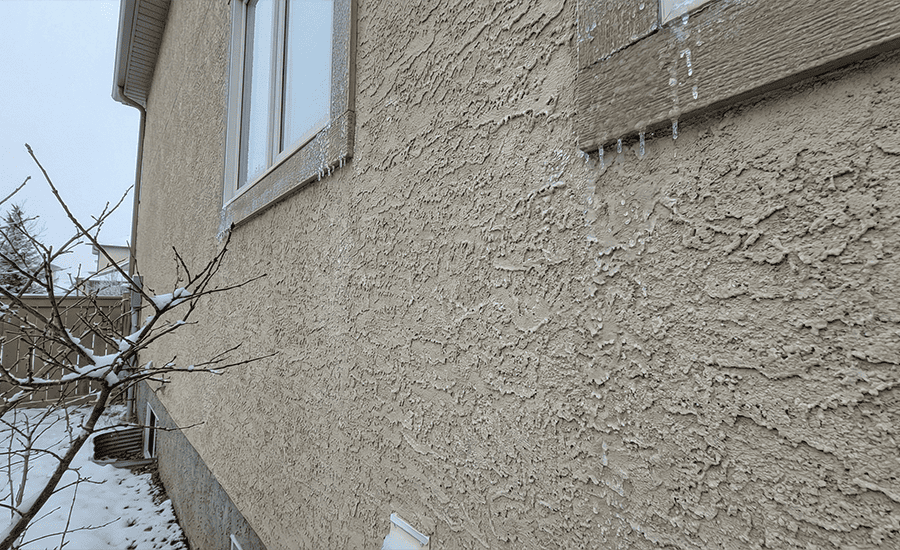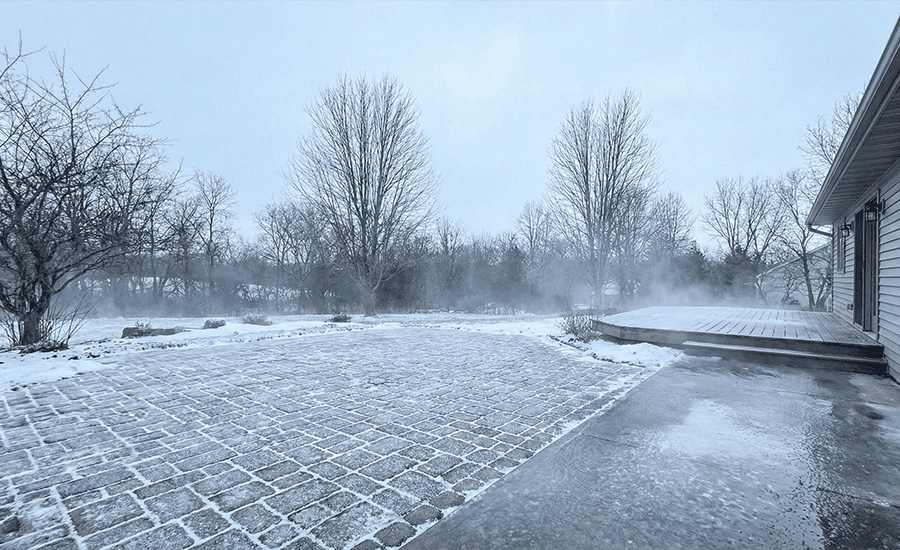Have you ever thought of an obstruction in the route of your fire escape when you are in an emergency? This surely sounds scary because fire escapes are the safest pathways for rescuing occupants in residential and commercial buildings in NYC. Fire escapes were installed decades ago in old buildings in NYC, which tend to accumulate snow and ice on the metal structures, leading to gradual damage over time. Cold, harsh weather conditions can undermine the stability of the entire framework and pose a safety risk to the residents. Neglecting to clean accumulated frost from the mortar can lead to further damage and NYC safety violations, so it’s better to conduct seasonal maintenance to prevent costly repairs to the fire escape and compliance issues. Guidance from an experienced professional helps you better understand the laws and the servicing of the old fire escape.
In this blog, we’ll thoroughly discuss the damage snow and ice can cause to fire escapes, maintenance tips, and immediate actions to take.
What Are The Damage Risks for Fire Escape During Cold Weather?
Let’s have a look at the structural harm of fire escape caused by freezing temperatures:
Metal Degradation
When water comes into contact with metal, it leads to rust and corrosion. An aged fire escape with peeling paint and rusting has a higher risk of violations and safety concerns:
- Weakens joints and fasteners.
- Platforms and stairs can develop holes.
- Compromises the structure’s load-bearing capacity.
You can also explore our guide on NYC fire escape types to understand which structures handle harsh winters better.
Freeze-Thaw Damage
When snow hits NYC, the expansion and contraction occur in metal structures:
- Cracks in joints and brackets.
- Warped stair treads.
- Loose railings from expansion and contraction cycles.
Icey Walkways
Even structurally sound fire escapes become slippery:
- Snow reduces traction on stairs and platforms.
- Ice patches increase the risk of falls.
- Slippery surfaces can delay emergency evacuation.
For winter safety tips, check our fire escape safety checklist for NYC apartments to stay prepared.
Impeded Routes
Severe snowstorms or ice formation can block fire escapes entirely:
- Staircases become impassable.
- Landings can be covered with snow drifts.
- Emergency evacuation may be impossible until cleared.
Learn how NYC residents should handle snow on fire escapes for safer evacuation during storms.
Winter Care Guidelines for Fire Escapes
Make sure to perform regular winter maintenance on your fire escape to reduce the risk significantly. Here are some of the tips every homeowner should apply:
| Upkeep Tasks | Suggested Measures |
|---|---|
| Removing snow buildup | Clean the accumulated snow from the landings and stairs. |
| Anti-ice Treatment | Treat the surface with anti-slip & chloride-free agents. |
| Onsite-Assessment | Inspect the signs of damage like corrosion, rust, and weakened components. |
| Surface Refinishing | Recoat the fire escape with exterior-grade paints. |
| Specialist Audit | Bring qualified inspectors to assess structural connections. |
Consequences of Skipping Winter Maintenance
If you let the snow and ice pile up on the fire escape, it may trigger the following factors:
- Breakdown Risks: Structural components begin to collapse, compromising the fire escape.
- Safety Hazards: Snow causes the fire escape to slip, which violates the law.
- Potential Litigation: Homeowners are obliged to align with all the safety codes.
- Compliance Breaches: Make sure your fire escape remains functional 24/7.
Apartment renters may also check whether sitting on a fire escape is considered safe under NYC regulations.

Warning Signs That Your Fire Escape Needs Urgent Repairs
Beware of these red flags and address the issues promptly to prevent further damage:
- Drooping stairs and landings
- Corroded metal connectors
- Shaky guardrail
- Damaged brackets
- Continuous ice formation
For more clarity on older structures, explore when retractable fire escape systems might work better for tight spaces.
Expert Fire Escape Servicing Solutions
Always take the fire escape services from the expert contractor so they can guarantee the safety and compliance standards:
- Load testing to verify platform strength.
- Structural reinforcement for weak joints and brackets.
- Rust treatment and protective coatings.
- Emergency repair after heavy snow or ice storms.
Conclusion
Wrapping up this blog, your property can be in significant danger if you don’t promptly address the Snow pooling in NYC’s old fire escapes. When the temperature drops below freezing, it can severely degrade the structural integrity and functionality of your fire escape. Regular upkeep of the fire escape maintains the safety pathway while meeting all the safety requirements.
Sardar Restoration Corp proudly serves every corner of NYC, including the Bronx, Manhattan, Brooklyn, Westchester, and Queens. Our services are designed to meet your specific needs, providing top-quality solutions wherever you are. Check our service areas to see how we can assist you in your location.
Contact us today at (+1) 917-355-8556 or sardarrestoration@gmail.com, or visit us at 2770 Fish Ave, Bronx, NY 10469, United States.
FAQS
Do you remove snow and ice from fire escapes?
Yes! Sardar Restoration Corp. Skillfully and safely removes ice from the fire escapes to make the emergency pathway clear and protected from corrosion.
Can snow cause long term rust on old fire escapes?
Yes, snow melts into the metal and speeds up rusting, especially on older fire escapes that already have worn paint or exposed joints.
Do you inspect fire escapes for winter damage?
Yes! Sardar Restoration Corp. expertly and accurately inspects all the parts of the fire escape, including platforms, stairs, railings, and brackets, to notice the rust, corrosion, cracks, or structural weakness caused by snow and ice.
Why does ice increase the risk of fire escape failure?
Ice expands inside cracks and joints, which weakens brackets, stairs, and railings over time.
Do you apply protective coatings to prevent winter damage?
Yes! Our fire escape painting contractor in NYC uses high-quality weatherproof protective coatings to prevent rust and corrosion on the fire escape.
How do I know if my fire escape is unsafe during winter?
Shaking steps, sagging platforms, frozen hinges, and visible rust are early signs that the structure needs attention.
Do you help ensure fire escapes meet NYC safety codes?
You don’t need to worry about it! Our fire escape contractor in NYC ensures your fire escape is maintained in accordance with NYC DOB, OSHA, & FDNY safety codes and regulations.
Does freezing weather affect fire escape paint?
Yes, repeated freezing makes old paint peel faster, leaving metal exposed to moisture and corrosion.








